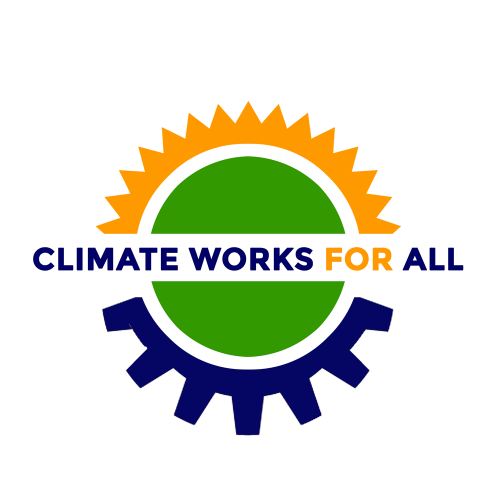
January 28th, 2021
The Honorable Andrew M. Cuomo
Governor of New York State
NYS State Capitol Building
Albany, NY 12224
Re: TED bill provision enabling New York City buildings owners to evade climate change responsibility
Dear Governor,
The Climate Works for All coalition would like to communicate our opposition to Part R in the Transportation, Economic Development, and Environmental Conservation FY 2021 (TED) bill that willfully undermines New York City’s Local Law 97 and weakens the City’s ability to reduce greenhouse gas emissions and provide a just transition to labor and communities disproportionately affected by climate change.
Climate Works for All (CW4A) coalition members are ALIGN, NYC Environmental Justice Alliance (NYC-EJA), New York City Central Labor Council, El Puente, The Point, UPROSE, Sierra Club, Nos Quedamos, IUPAT DC 9, People’s Climate Movement NYC, PSC-CUNY, New York State Nurses Association, Pratt Center for Community Development, GOLES, Urban Homesteading Assistance Board, WE ACT for Environmental Justice, Chhaya, TREEage, Kinetic Communities, SEIU Doctors Council, JCAN-NYC, Urebecon LLC, New York Lawyers for the Public Interest, 350 Brooklyn, and 350 NYC. Our organizations have a long history of working together on issues that intersect and affect labor, community, climate, and environmental justice communities.
Since 2015, the Coalition has worked ardently to reduce building emissions[1] and pass Local Law 97, a bold and visionary law that fights climate change by capping emissions from large buildings. Before the passage of the law, the Coalition effectively debated and pushed back on renewable energy credits and other carbon trading schemes that only serve as loopholes and hurt environmental justice communities. Part R of the TED bill would undermine this work by allowing large building owners to purchase offsets from renewable energy sources outside of the City. Building owners could easily use this tool to avoid the leadership and actual work needed to reduce emissions.
The policy option to allow offsets through renewable energy credits was debated and staunchly opposed by numerous stakeholders, including members of our coalition. We firmly believe that carbon offsets do not effectively fight climate change. These types of carbon trading schemes are too often turned into loopholes that end up disincentivizing carbon emission reductions. A 2016 study out of California showed that emission reductions from their Cap-and-Trade program might have been overstated by as much as 80 million tons of carbon dioxide.[2] New York City can and will do better.
Moreover, carbon offsets burden environmental justice communities yet again. When buildings are allowed to offset their emissions through renewable energy produced outside of the geography in which they emit carbon, communities surrounding these polluters do not reap the benefits of those offsets. Instead, they are continually harmed by the pollution and carbon released into the atmosphere, perpetuating the incidence of asthma and lung ailments that make these communities more susceptible to respiratory diseases such as COVID-19. As we transition towards a new green economy, we must ensure that environmental justice communities do not continue to be disproportionately burdened through unfair policies.
Furthermore, good climate policy is good labor policy. Local Law 97 and the energy efficiency and upgrades it requires can provide thousands of good-paying jobs for construction workers, HVAC technicians, electricians, painters, carpenters, and other building trades professionals. Provisions such as Part R of the TEC bill will inevitably allow building owners to evade doing the necessary retrofits to comply with Local Law 97, which will mean losing thousands of green and well-paying jobs — all while continuing to pollute New York City air.
In early 2019, while Local Law 97 was being debated, our coalition published a report, which detailed that the law would create over 23,600 construction jobs and nearly 17,000 indirect jobs needed to support building retrofits.[3] Market analyses conducted soon after the law passed estimated that retrofits could create a market opportunity of $20 billion and over 140,000 jobs across the New York City metro area by 2030.[4] A recent jobs study presented by NYSERDA to the CLCPA Just Transition Working Group, showed that the COVID-19 crisis has reduced jobs available in New York’s energy efficiency industry by 9.7% or more than 12,000 jobs.[5] The last thing New York City needs is a loophole bought by the Real Estate Board of New York[6] to hinder job creation and help large building owners avoid responsibility.
Amid a necessary COVID-19 economic recovery and a current unemployment rate of 11.8% in the City, now more than ever, we need government leadership to support activities that can solve the multiple crises we are experiencing. Removing Part R from the TED bill is precisely the kind of leadership we need to fight climate change, protect communities overly burdened by systemic issues, and incentivize green industries that promote good jobs.
Sincerely,
Climate Works For All Coalition
Members of the NY Renews Steering Committee:
Catskill Mountainkeeper
Center for Working Families
Citizen Action New York
Environmental Advocates of NY
Green Faith
Long Island Progressive Coalition
Our Climate
PUSH Buffalo
Additional supportive organizations:
Center for Urban Environmental Reform
Cc: Hon. Carl Heastie, Speaker
Hon. Andrea Stewart Cousins, Senate Majority Leader
Hon. Michael Gianaris, Deputy Majority Leader
Hon. Todd Kaminsky, Chair of Environmental Conservation Committee
Hon. Liz Krueger, Chair of Finance Committee
Hon. Steve Engelbright, Chair of Assembly Committee on Environmental Conservation Hon. Helene E. Weinstein, Chair of Assembly Ways and Means Committee
[1] Climate Works for All Coalition. (2015 November, 17). “Elite Emissions: How the Homes of the Wealthiest New Yorkers Help Drive Climate Change.” Retrieved from https://alignny.org/resource/elite-emissions-how-the-homes-of-the-wealthiest-new-yorkers-drive-climate-c hange/
[2] Cushing, et. al. (2016, September 14). “A Preliminary Environmental Equity Assessment of California’s Cap-and-Trade Program.” Retrieved from https://dornsife.usc.edu/PERE/enviro-equity-CA-cap-trade
[3] Climate Works for All. (2019, April 16). “Constructing a Greener New York , Building by Building” Retrieved from https://alignny.org/resource/10284/
[4]Urban Green Council. (2019, June 19). “Retrofit Market Analysis” Retrieved from https://www.urbangreencouncil.org/sites/default/files/urban_green_retrofit_market_analysis.pdf
[5] NYSERDA. (2020). “New York Clean Energy Industry Report.” Retrieved from https://www.nyserda.ny.gov/About/Publications/New-York-Clean-Energy-Industry-Report
[6] French, Marie J. (2021, January 25). “Cuomo’s renewable energy boon to New York City building owners.” POLITICO. Retrieved from https://www.politico.com/states/new-york/city-hall/story/2021/01/25/cuomos-renewable-energy-boon-to-ne w-york-city-building-owners-1359636